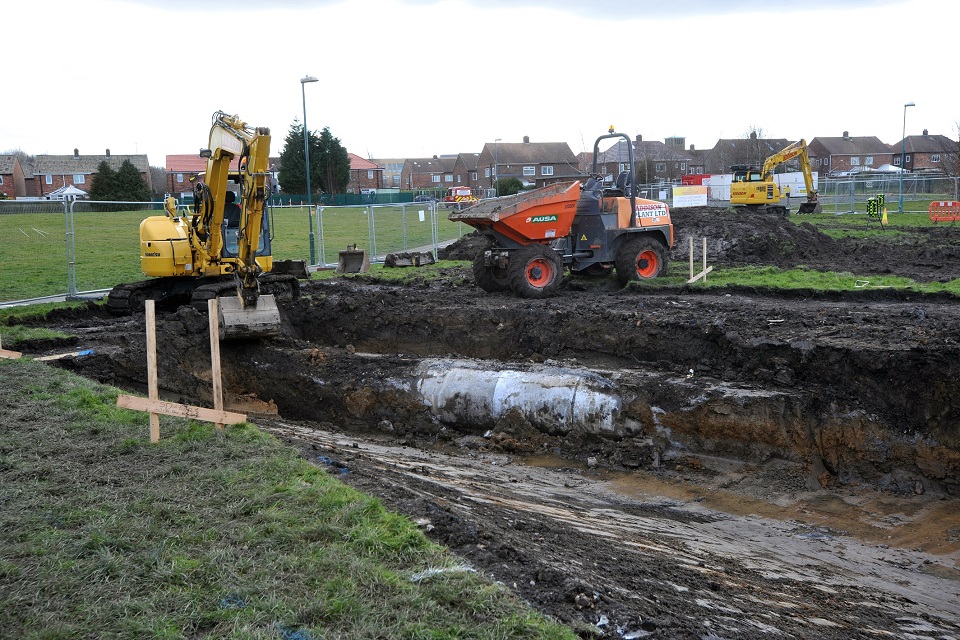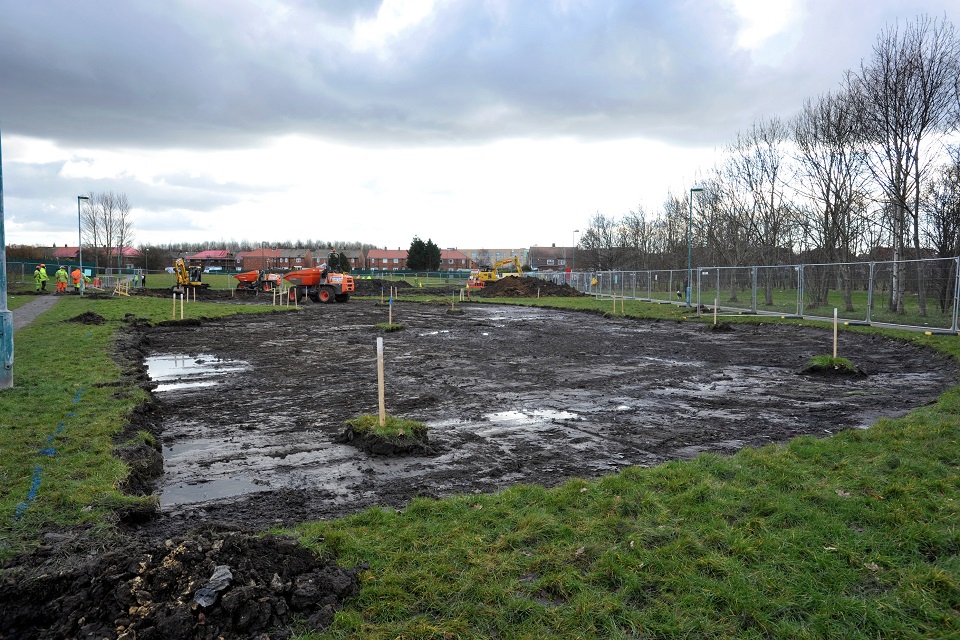Press release: Work starts on multi-million pound North East flood scheme
Work has started on site on a £2.5million project which will help protect around 100 homes and businesses in a South Tyneside community from flooding.
Monkton flood alleviation scheme will also see a section of the Bede Burn running underground opened up – known as ‘daylighting’ – and green space created for the community to enjoy.
The scheme is being delivered by South Tyneside Council and its partners at the Environment Agency and Tyne Rivers Trust. It’s expected to be completed in the winter.
It will tackle surface water flooding, which happens when rainwater does not drain away or soak into the ground, but lies or flows over the ground instead.

Communities better protected
Councillor Moira Smith, Lead Member for Area Management and Community Safety at South Tyneside Council, said:
We are delighted to see work get underway to reduce the risk of flooding to properties which have been badly affected in the past.
It is never possible to guarantee that an area will be flood free. However by working with our partners we can certainly help to increase the level of protection and reassurance by delivering long-term sustainable schemes such as this.
These measures will go a long way to controlling the flow of surface water and diverting it away from local residents and businesses. Once complete, communities will be better protected with the added benefit of an enhanced local environment.

Wider social and environmental benefits
The scheme involves managing surface water where problems have been identified around the Monkton Burn, Lukes Lane Estate and Leam Lane area, Mill Lane, Lilac Walk/College Road, Devon Road, Campbell Park Road/ Thirlmere Court and Mountbatten Avenue areas.
The plan includes improved drainage and landscaping next to Toner Avenue School and as part of uncovering the Bede Burn an attenuation basin to store run-off water during storms will be created.
The scheme will have wider social and environmental benefit, encouraging local people and children involved in creating valuable new habitat.
The scheme is largely funded by the Environment Agency, as well as a contribution from the local levy – which is money raised by local authorities for flood projects.
Leila Huntington, Flood Risk Manager for the Environment Agency in the North East, said:
This is an excellent example of partners working together to not only develop a scheme which reduces the risk of surface water flooding but also creates valuable habitat and a space for the community to enjoy.
We’ve been working with the council and Tyne Rivers Trust to raise awareness of the importance of understanding flood risk and taking care of their environment and there’ll be opportunities for the community to get involved. This is something they really can be proud of.
Liz Walters, Project Manager at Tyne Rivers Trust added:
This is a great example of using environmentally friendly ways to reduce the risk of flooding. As part of the project we’ll be working with the local community and schools to create a green space for local residents to enjoy as well as creating new habitats for wildlife.
Anyone who’d like to volunteer to help with planting at Bede Burn should get in touch with Tyne Rivers Trust on 01434 636904.
The latest information on the scheme can be found at the Monkton Flood Alleviation Scheme website